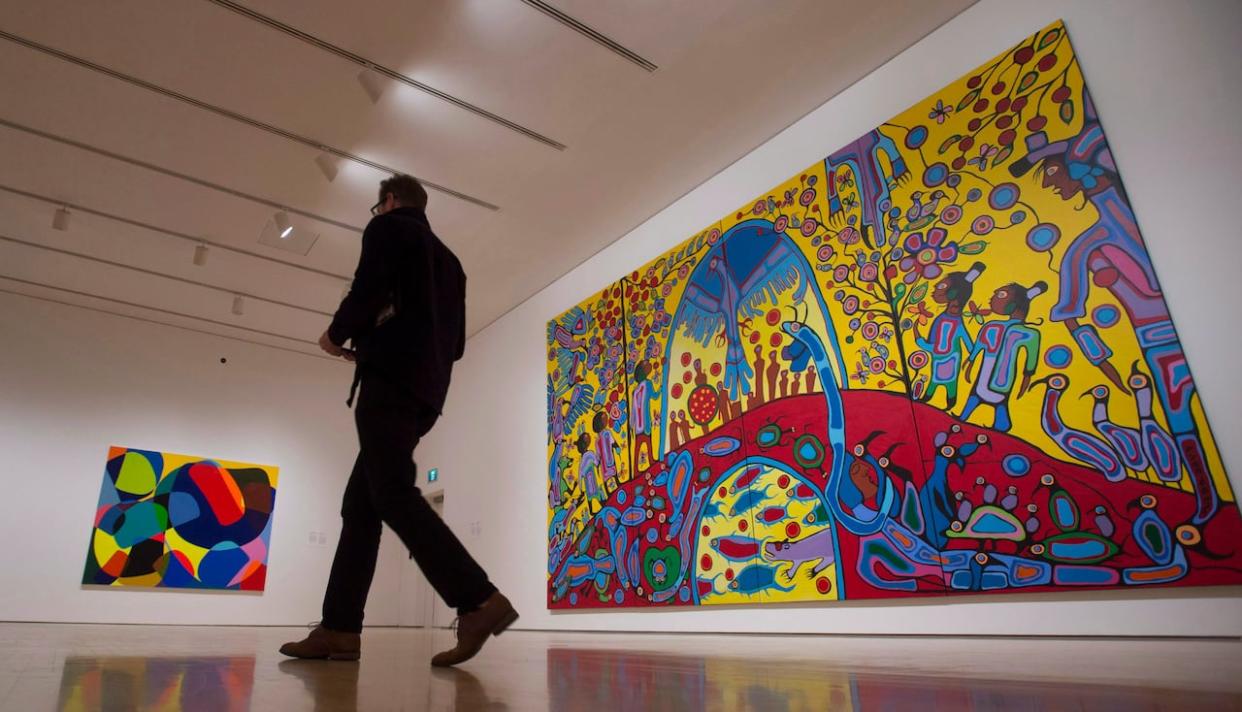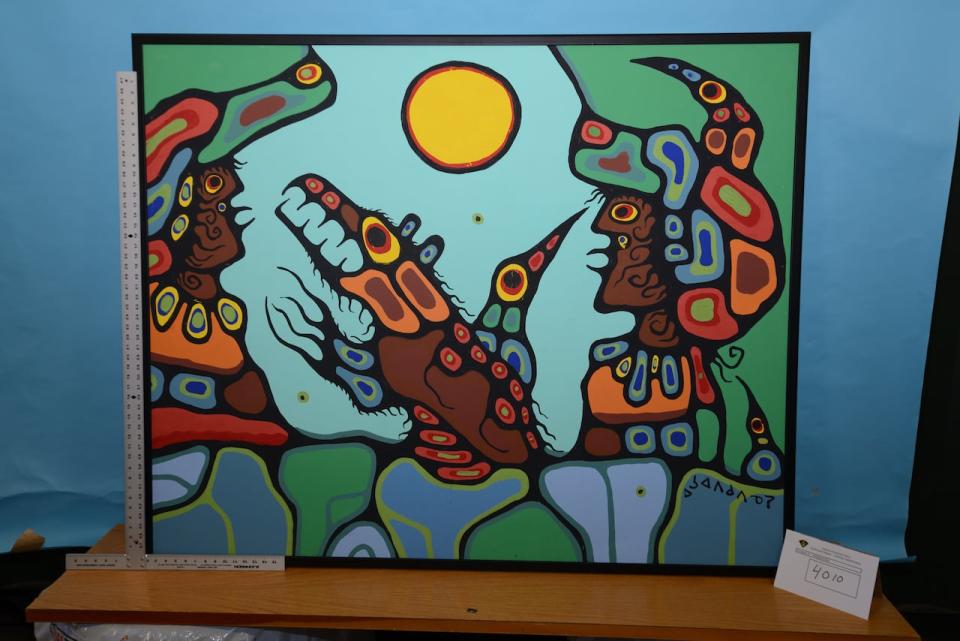Another member of fraud ring producing fake Norval Morrisseau paintings pleads guilty

The case investigators have called Canada's largest art fraud investigation continues working its way through the court system, with another person pleading guilty to fraud charges in Thunder Bay, Ont.
David Voss pleaded guilty to counts of forgery and uttering forged documents Tuesday for operating an art fraud ring out of Thunder Bay between 1996 and 2019. Voss oversaw the creation of thousands of forged artworks falsely attributed to Anishinaabe artist Norval Morrisseau, said the agreed statement of facts read in court.
"David Voss has never met, acquired artwork from, or otherwise interacted with, Norval Morrisseau," said the statement.
Investigators have identified over 1,500 Voss ring forgeries so far, and seized nearly 500 of those, it said.
In March, 2023, investigators with the Thunder Bay Police Service and the Ontario Provincial Police charged eight people in with art fraud charges related to making and selling art passed off as the work of Norval Morrisseau.
Morrisseau, who died in 2007 at age 75, was a renowned artist from the Ojibway Bingwi Neyaashi Anishinaabek First Nation in northwestern Ontario. He's known as the founder of the Woodlands School of art and his work has been exhibited in galleries across Canada, including at Rideau Hall in Ottawa.
According to the agreed statement of facts, Voss developed an assembly line process and enlisted multiple painters in his fraud ring, said the statement. Voss would draw an outline in pencil, then mark the areas to be coloured in with letter codes corresponding to different colours.
"The painters were paid to apply the paint in accordance with this 'paint by numbers' process," said the statement.
'Paint by numbers' markings gave investigators a clue
These pencil outlines were later used by forensic analysts to confirm Voss' forgeries weren't authentic Morrisseau works.
The Canadian Conservation Institute (CCI) compared suspected forgeries with paintings known to be securely attributed to Morrisseau, said the statement of facts. When they examined the works with digital infrared photography, the suspected fakes showed carbon drawings under the paint, consistent with graphite pencil, it said.
"Notably, 26 of the 30 questioned paintings disclosed underdrawings in the form of letter codes that corresponded to the colour of the overlying paint. They appear to be a guide to indicate which colour to use in specific areas," said the statement.

Police seized 1,000 paintings as part of a yearslong investigation into an art fraud ring in Thunder Bay, Ont. (Ontario Ministry of the Attorney General )
None of the authentic paintings had these kinds of markings, the statement said.
Voss also had the paintings signed with Morrisseau's name or initials.
He claimed most of the forgeries were painted in the 1970s, and would sand or rub carbon paper on the canvases to make the paintings look older, said the statement.
How the forgeries were moved and sold
The two main local buyers and distributors of Voss ring forgeries in Thunder Bay were Rolf Schneiders, who died in 2015, and Albert Azzolini, a consignment store owner, according to the statement of facts.
Voss also sold the forgeries to auction houses and distributors across Canada.
From the late 1990s onward, the majority of the forgeries were resold through two Port Hope, Ont., auction houses run by Randy Potter, who died in 2018, said the statement. Voss sold Potter 1,500 to 2,000 works, giving him a 30 per cent cut from all the sales, it said. They usually sold at auction for $1,200 to $7,000, but could fetch as much as $30,000, Potter testified in a previous civil proceeding.
Multiple purchasers of these forged works have pursued action in civil courts. One woman who purchased a $10,350 painting that ended up being a forgery Voss sold. A gallery owner who testified in support of the painting's authenticity said the ownership history Voss provided indicated it was genuine.
The provenance info indicated Voss' father was a guard at the Kenora, Ont., jail, where Morrisseau was periodically incarcerated, said the statement. It alleged guards obtained many paintings from the artist.
"David Voss's father never worked as a jail guard in Kenora and never received original Norval Morrisseau paintings," said the statement.
It's unknown how many Voss ring forgeries are still out in circulation, the statement said.
Justice Bonnie Warkentin commended Voss for working with the Crown to reach a "just result".
Voss will be returning for sentencing at a later date.

 Yahoo News
Yahoo News 
